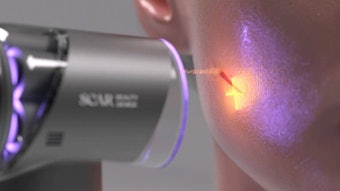
The V-Beam Prima (Syneron-Candela), a new, long-pulse, higher‐energy, 595nm pulse dye laser with dynamic spray cooling and a 15mm diameter circular treatment beam, is effective for rosacea-related redness. And the larger beam size improves both outcomes and patient safety, according to a study Eric F. Bernstein, MD, et al, published on April 10, 2018, in Lasers in Surgery and Medicine.
The researchers enrolled 20 subjects with erythemato‐telangiectatic rosacea. Nineteen completed the study, which included four monthly treatments and evaluation by blinded reviewers two months following the final treatment. The evaluators correctly identified baseline and follow‐up images in 55 out of a total of 57 image pairs (96.5%). Improvement scores averaged 53.9% ± 2.6% with 16 of the 19 subjects achieving more than 40% improvement, and 11 of the 19 subjects achieving greater than 50% improvement. The most common adverse events included mild edema, mild-to-moderate erythema, and mild-to-moderate purpura.
The authors noted that the larger beam size (15mm vs. 12mm in the original V-Beam) allowed for faster treatments, and also impacted the dynamics of laser‐tissue interactions and depth of penetration of the laser energy. “Even though light scatters with similar distances independent of beam diameter, the probability of staying inside the collimated treatment column is higher for light scattered in a larger beam diameter,” they wrote. “The net result is higher subsurface fluence for the larger beam diameter when measured at comparable depths. In addition, similar subsurface fluences will be found deeper in tissue for the larger diameter beam. For similar incident fluences, the safety profile is increased due to the higher subsurface fluences.”
Image copyright Getty Images











